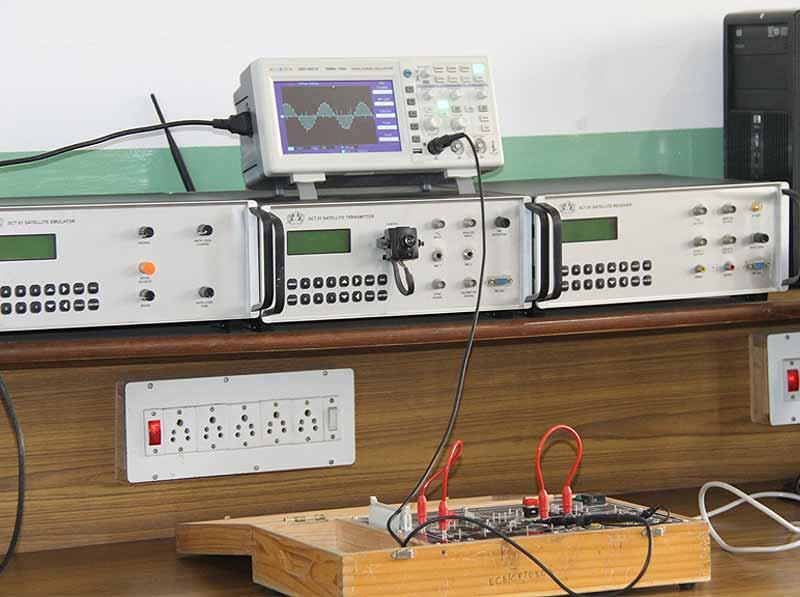A Wheatstone bridge consists of AB = 4 Ω, BC = 3 Ω, CD = 6 Ω and DA = 5 Ω, A 2.4 V battery is connected between points B and D. A galvanometer of 8 Ω resistances is connected between A and C. Using Thevenin’s theorems find the current through the galvanometer.
.png) Fig.28(a)
Fig.28(a)
Total resistance of parallel pair \(\frac{9 \times 9}{ 9 + 9}=4.5\ \mathrm{\Omega}\)
Source current is \(\frac{2.4}{4.5}=0.53\ Amp\).
Current the branch BAD is \(\frac{2.4}{4.5 \times 2} = \frac{1.2}{4.5}=0.27\ Amp\).
Current through the branch BCD is \(\frac{2.4}{4.5 \times 2}=\frac{1.2}{4.5}=0.27\ Amp\).
Voltage drop across BA is \(\frac{4 \times 1.2}{4.5}=1.07\ V\)
Voltage drop across BC is \(\frac{3 \times 1.2}{4.5}=0.8\ V\)
.png) Fig. 28(b)
Fig. 28(b)
.png) Fig. 28(c)
Fig. 28(c)
Hence voltage across AC is \(V_{o.c}=1.07-0.8=0.27\ V\)
To find the Rth the circuit diagram may be redrawn as
Hence Rth =\(\left(8+2.2+2\right)=12.2\ \mathrm{\Omega}\)
The current through the galvanometer is \(\frac{0.27}{12.2}=0.02\ Amp\).
Draw a mathematical expression for RMS value of a sinusoidal voltage \(v=V_{m}\sin{{\omega t}}\).
What is meant by hysteresis in a magnetic circuit? What is the significance of B-H curve?

State Channel capacity theorem

Write short notes on

Establish the equivalence between Thevenin’s and Norton’s theorems.